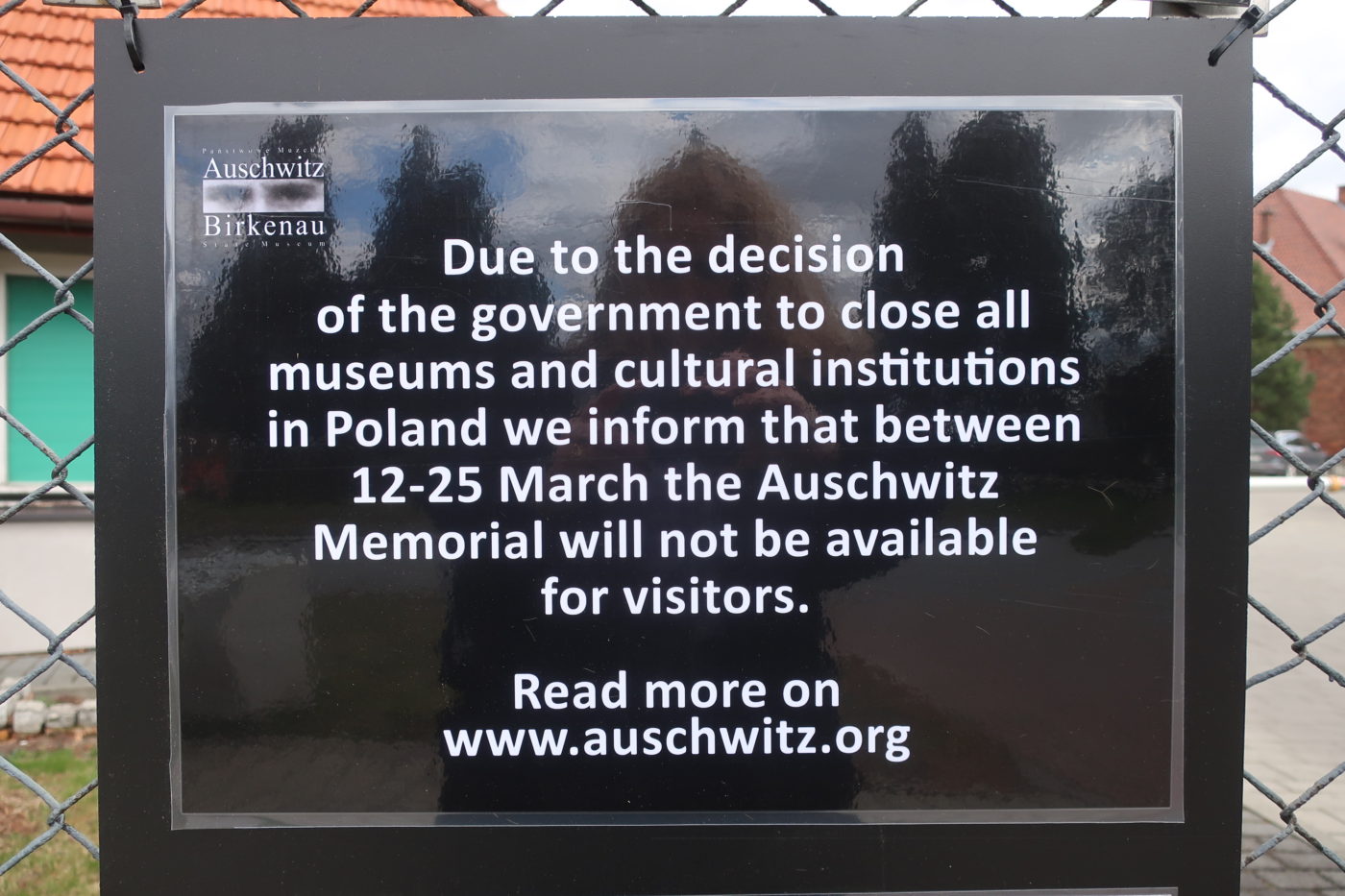How much can you see from the outside if visiting Auschwitz when closed due to coronavirus restrictions? Discover how to get there by public transport, what you can see, and read a brief history of the horrors of this chilling place.
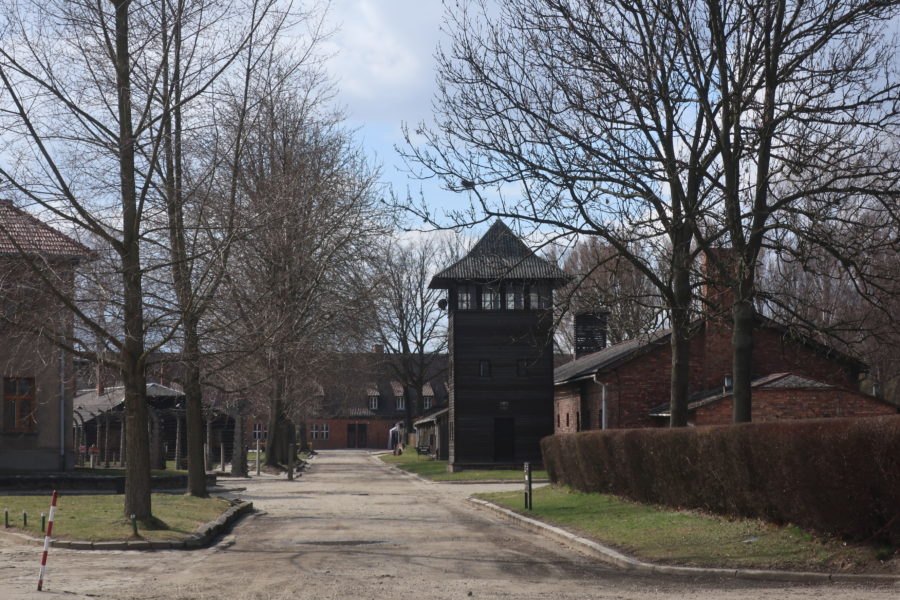
Brief History of Auschwitz
The Nazis, with their twisted ideology. decided to focus on wiping out the Jewish race. A number of methods were tried but they eventually set up extermination camps, also known as death camps. These were designed on an industrial scale to kill mainly Jews but also Roma, Communists, homosexuals, Poles and other ethnic groups.
As Poland was home to 3 million of the estimated 6 million Jews living in Europe in 1939, the Nazis established 6 extermination camps there, which also doubled as concentration camps for slave labour for Nazi factories .
Auschwitz became a key part of the chillingly titled “Final Solution to the Jewish Question”, and the “Gypsy Question” as well.
Auschwitz I was founded on Himmler’s orders in April 1940. The Nazis first used the abandoned army barracks to hold Polish political prisoners after the Nazi invasion of Poland in October 1939.
This was initially set up as a slave labour camp, and was also where many of the Nazi doctors, including Josef Mengele, set up their infamous and horrific experiments on infants, twins and dwarves.
The Nazis, with cold-blooded efficiency, decided it was necessary to sped up the killing process so built a second camp. Auschwitz II-Birkenau was set up in October 1941 in 2 parts. There were wooden huts to house 125,000 prisoners to work in the labour camp. There were 4 crematoria with gas chambers and incinerators.
A third camp, Auschwitz III-Monowitz was set up in April 1942 to be a labour camp for the German chemical company, IG Farben.
Only Auschwitz I and Auschwitz II-Birkenau are open to the public as part of the Auschwitz Memorial.
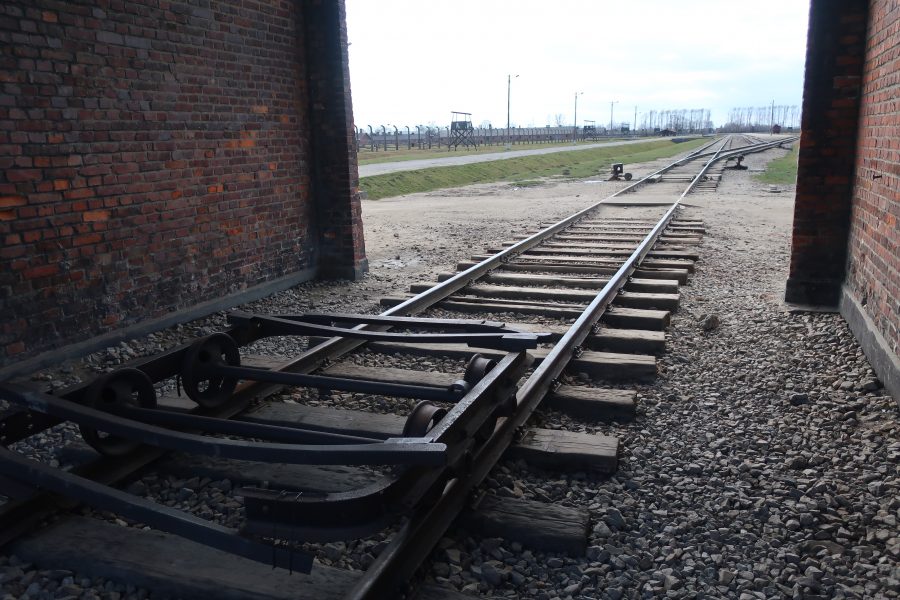
Chilling figures
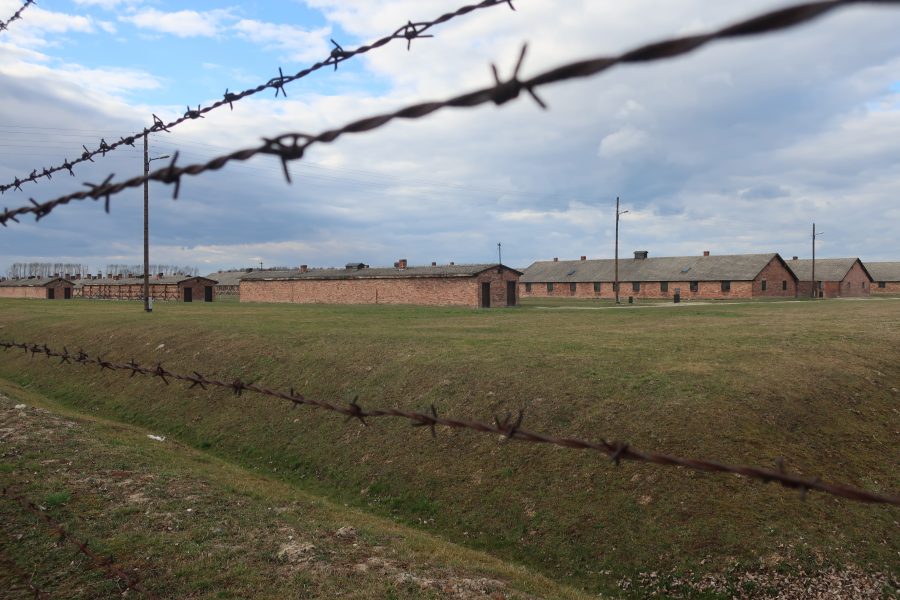
It is estimated that 1.3 million people were sent to Auschwitz – nearly 1.1 million of whom were Jews.
In total, 1.1 million people were killed there: 960,000 Jews and approximately 200,000 others, including Roma, Soviet POWs, non-Jewish Poles, homosexuals and the mentally challenged.
Auschwitz was liberated by the Soviet Army in January 1945. 7,000 prisoners were freed. They had been left behind as were too weak for the death marches that nearly 60,000 others had been forced on when the Soviet troops were first sighted.
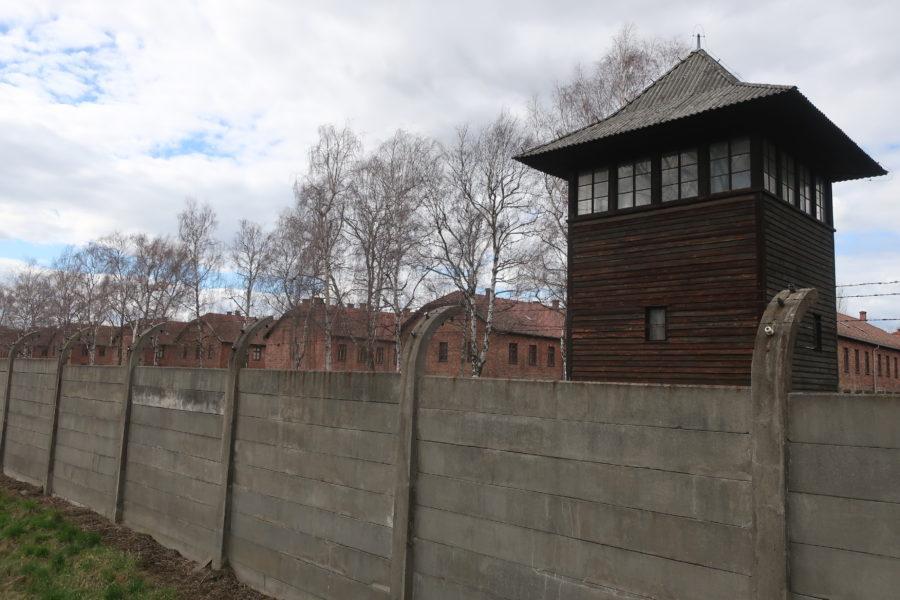
What can you see when the Memorial is closed?
We arrived back in Krakow on 10th March from Wrocław, as were surprising a friend from the UK for her birthday. We’d spent 5 days in Krakow in February but decided to delay visiting Auschwitz as wanted to go with Keeley and James.
This proved not to be the best decision, as on 12th March 2020 the Polish government closed all museums, government buildings, schools and sports facilities for an initial 14 days. These closures were extended for a further 20 days and are still in force on 28th April.
We ended up visiting Auschwitz twice, on 12th March for a trial run, and again on 14th March. This post is a combination of both visits.
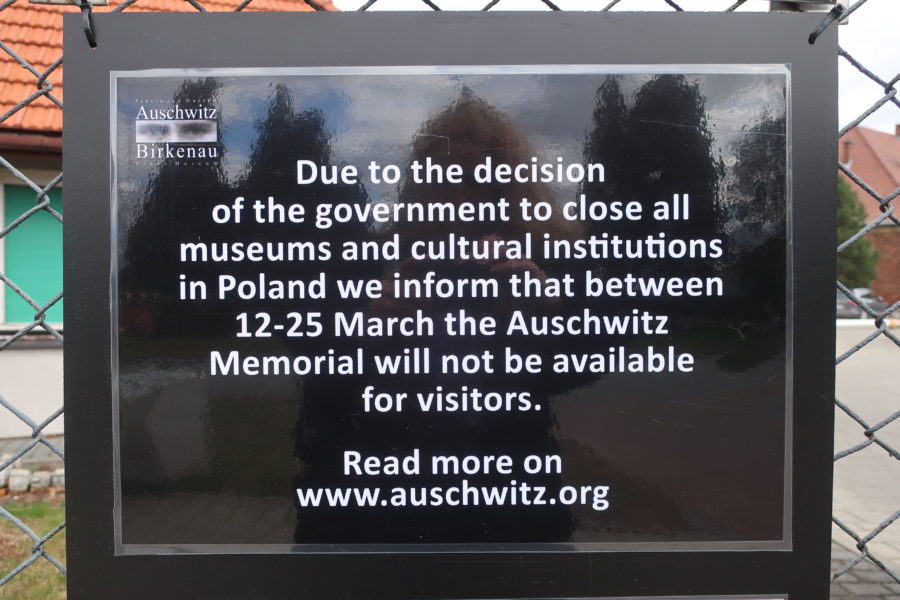
Visiting Auschwitz by public transport
We went to the Auschwitz concentration camp on one of the minibuses leaving every 20-30 minutes from Krakow MDA bus station. These cost between 12-15 zloty per person each way, depending on the bus company.
Normally you have to buy tickets in advance to ensure a place but there were only 5 Spanish tourists on our bus to Oswiecim, and one local on the return trip to Krakow!
The buses leave from the top level, and tickets were sold from Window 11. As there was a bus just about to leave, we were told to buy our tickets directly from the driver.
A paper ticket was issued for each person, and I would recommend taking exact change. I am not sure if it is possible to pay by card.
Which is the correct name: Oświęcim or Auschwitz?
This medieval town has been known by many names. The Polish name is Oświęcim and the German name was Auschwitz. That was the name the Nazis used when they annexed the town, and which is now synonymous with the evil displayed by that terrible regime.
Driving to Oświęcim through small villages
Oswiecim (Oświęcim) is 50km from Krakow MDA, but the minibus went on quite a detour!
It was a lovely journey through small villages and farmland. I hadn’t realised that Poland was such a properous country – according to Wikipedia it has the 6th strongest economy in the EU.
This is obvious when taking the windy roads to the town of Oswiecim (Oświęcim), especially in comparison with some of the villages in less-prosperous countries that we have visited in the past 2 years.
Tragic past
The current prosperity is soon put to the back of the mind when arriving in Oswiecim (Oświęcim), the town that in the Nazis decided to turn into the site of their most efficient killing machine, the horror that was Auschwitz I and Auschwitz II-Birkenau.
The driver dropped us off near the front gate of Auschwitz, stressing that it was closed. I was so surprised that it was set in what looked like a housing estate. It seemed an incredibly prosaic setting for a place that had witnessed such horror.
What can be seen from the outside?
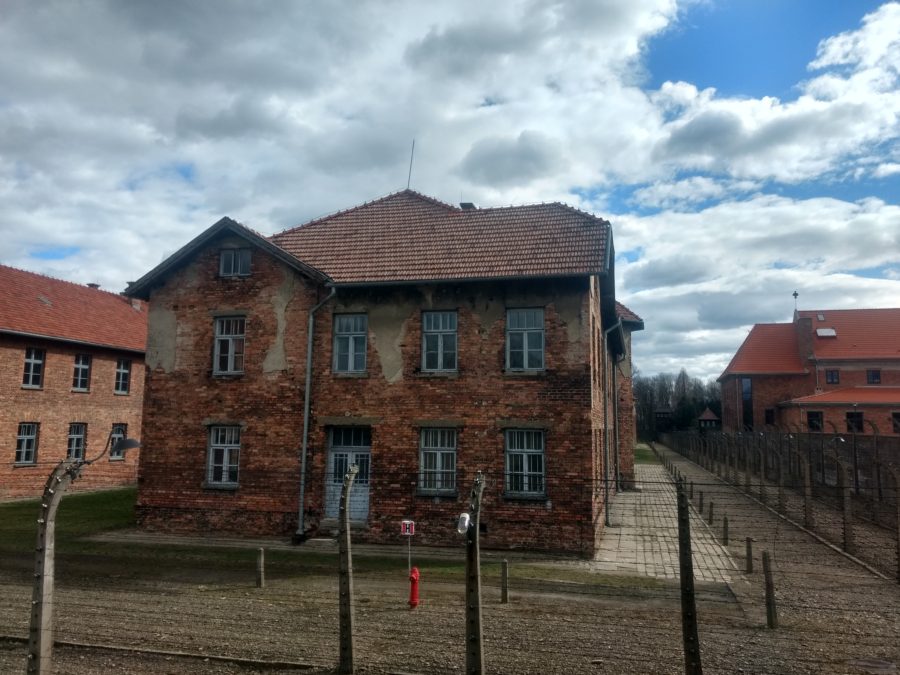
The first time we went there were still tour buses coming to Auschwitz. We saw 2 large groups of German students, and another group of tourists. There were also quite a few couples who, like ourselves, still wanted to pay our respects to the dead even if we couldn’t go inside.
It was eerie to be there with relatively few people around and empty car parks, seeing the electrified fences and knowing the horror that went on behind the brick walls.
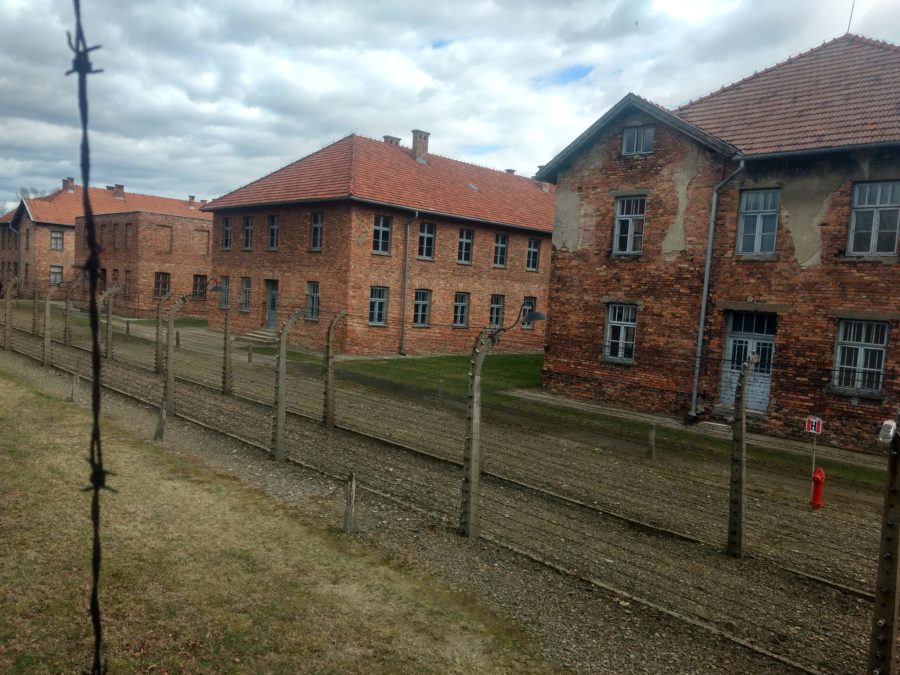
We spent an hour walking around the perimeter of Auschwitz I. We saw the various cell blocks and the guard towers.
There is a grassed area near the …. which was the ash pits????
The small shrine and cross are extremely poignant
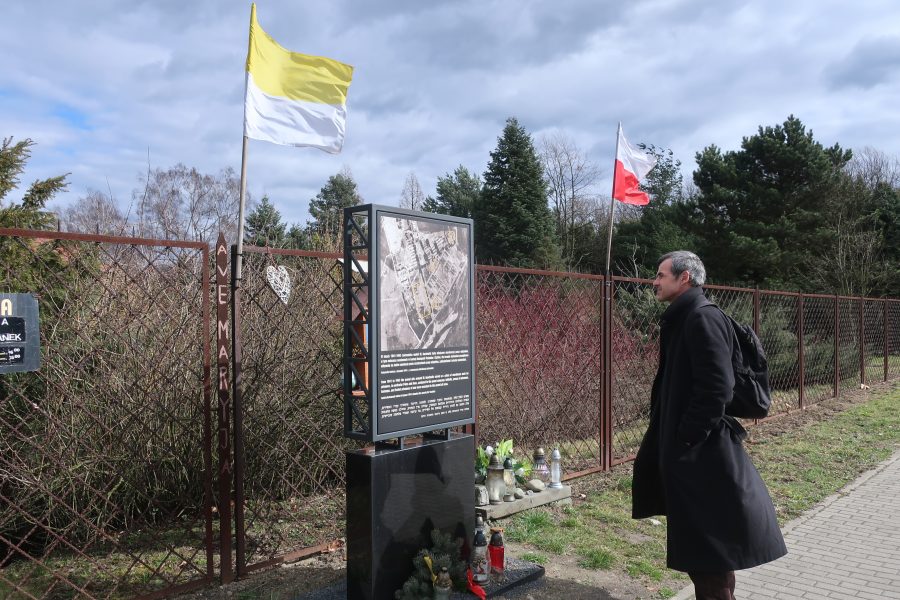
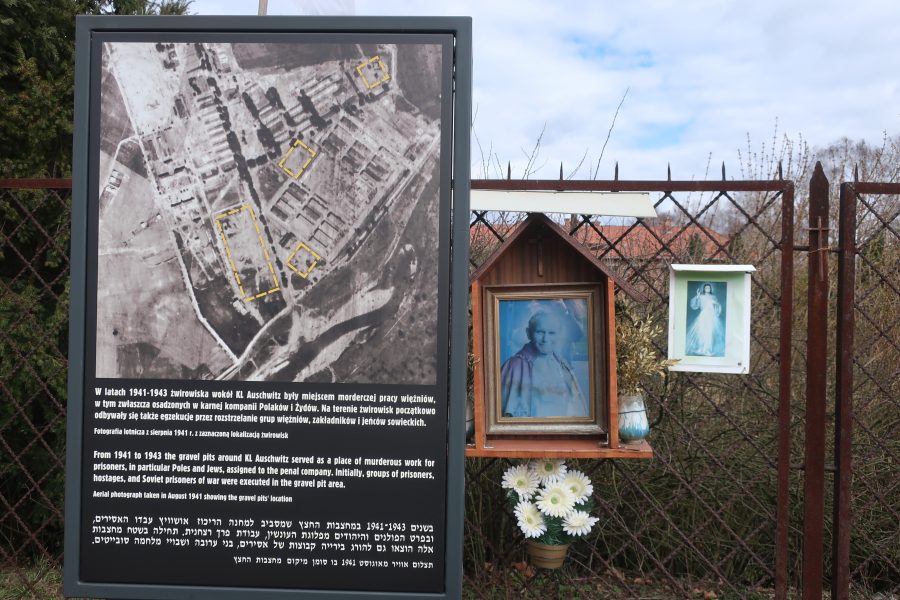
Auschwitz-Birkenau – Nazi Killing Factory
Judenramp
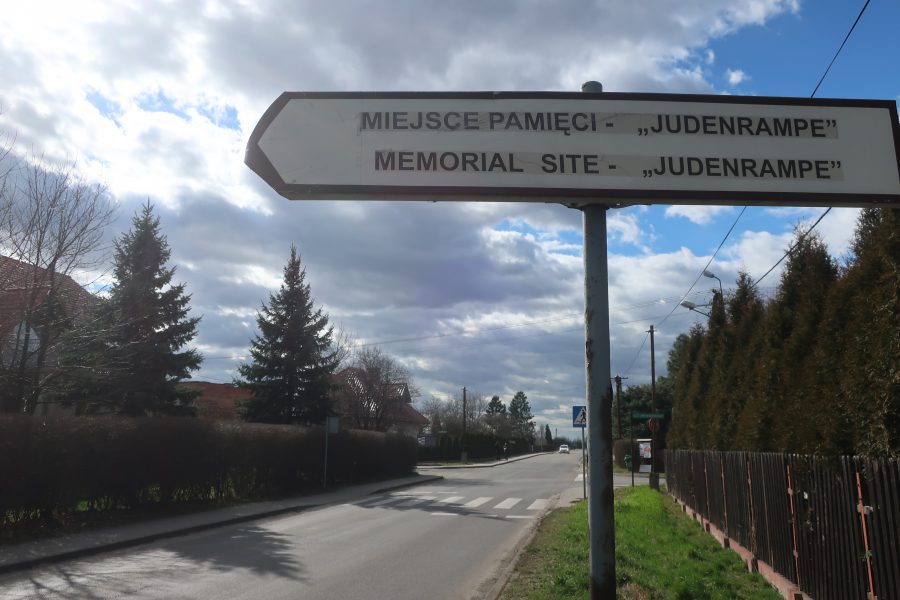
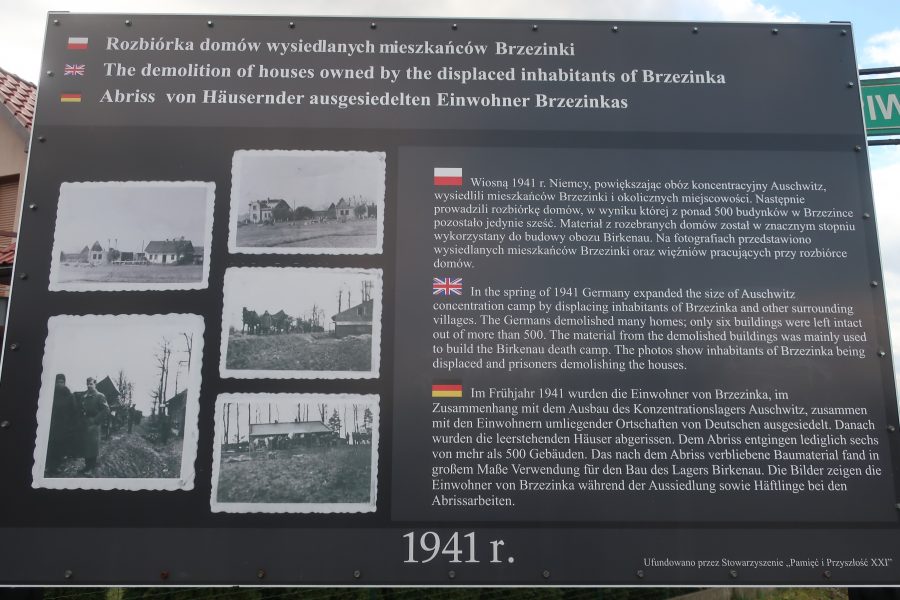
After Auschwitz I we walked past a ruined factory and over the railway bridge to Auschwitz-Birkenau, approx. 3 kms away.
We went first to the Judenramp and saw 2 cattle wagons of a similar type that would each have held at least 100 men, women and children being taken across Europe to their deaths.
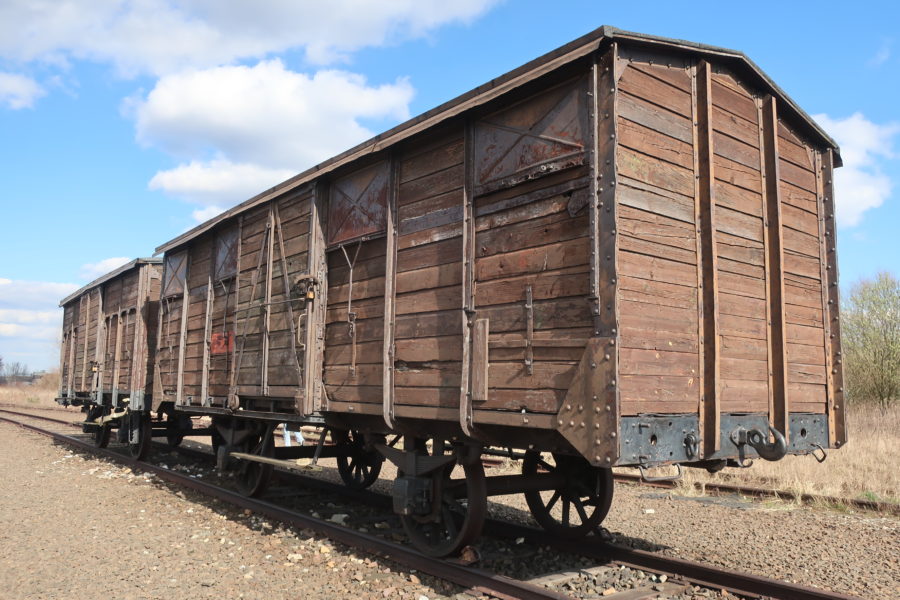
There are information signs and copies of heartwrenching sketches that were found in a bottle when the Soviet army liberated the camp on 27 January 1945
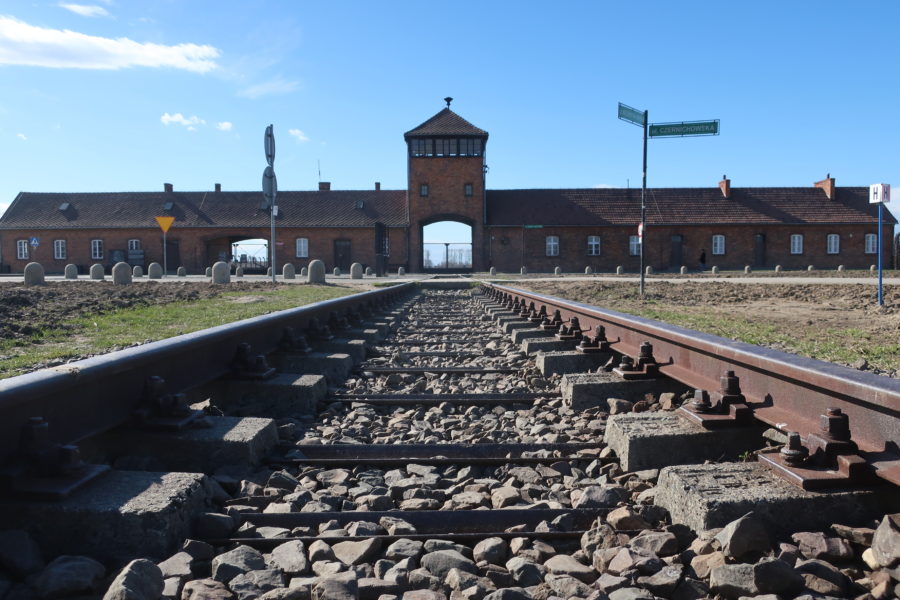
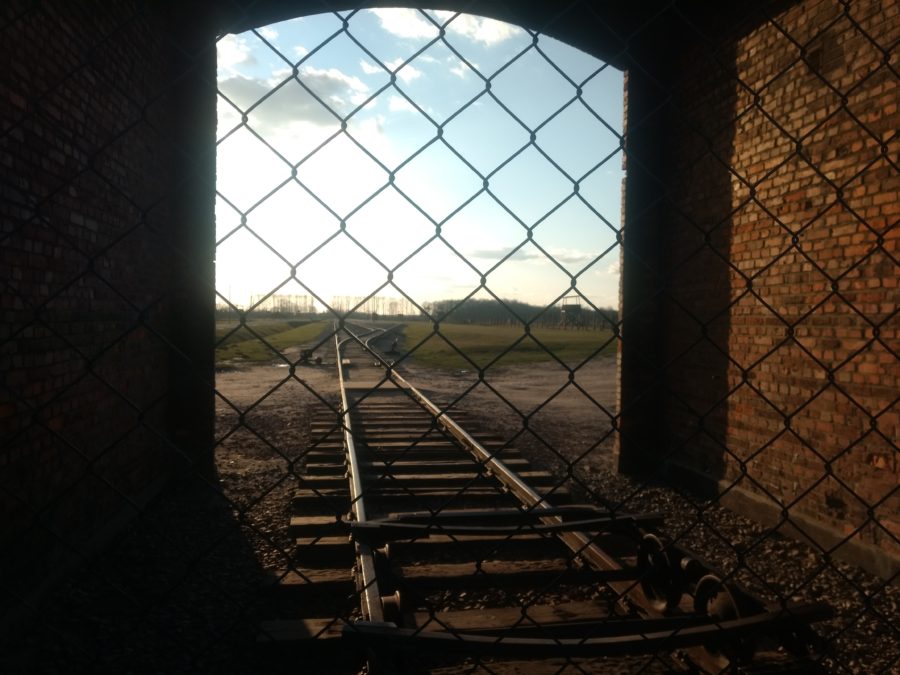
SS staff would select the fittest for the labour camps, and send the others directly to the gas chambers. The prisoners were told they were going to the shower rooms to wash after their long journeys, so needed to leave all their belongings outside for collection later.
We’ve seen photos of the piles of shoes, glasses and other belongings that would have been earmarked to send back to Germany.
There was a sense of desperate loneliness here as the cold wind rattled the barbed wire on the electric fences.
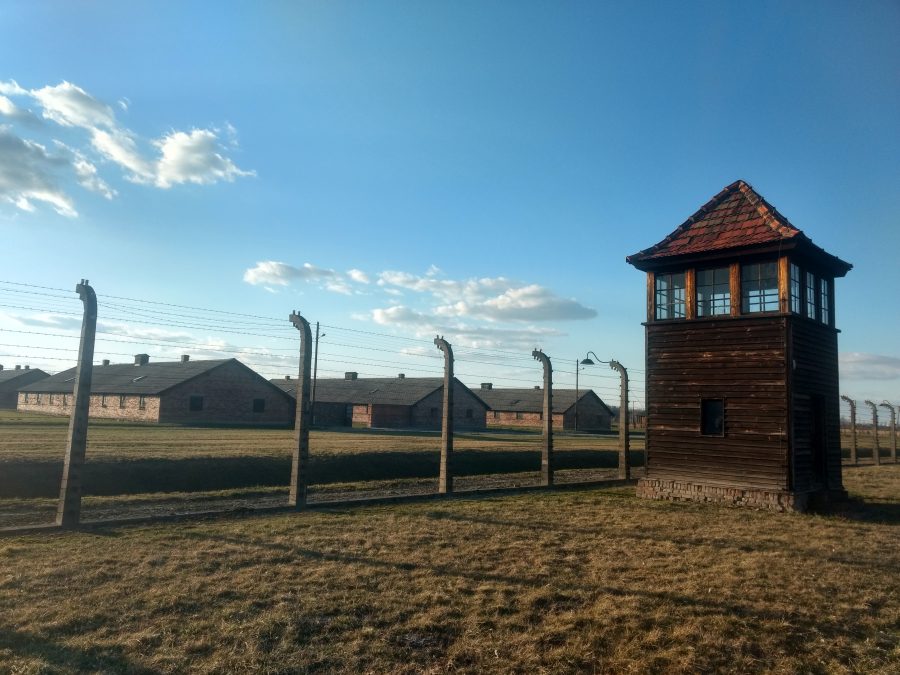
Watch tower at Birkenau.
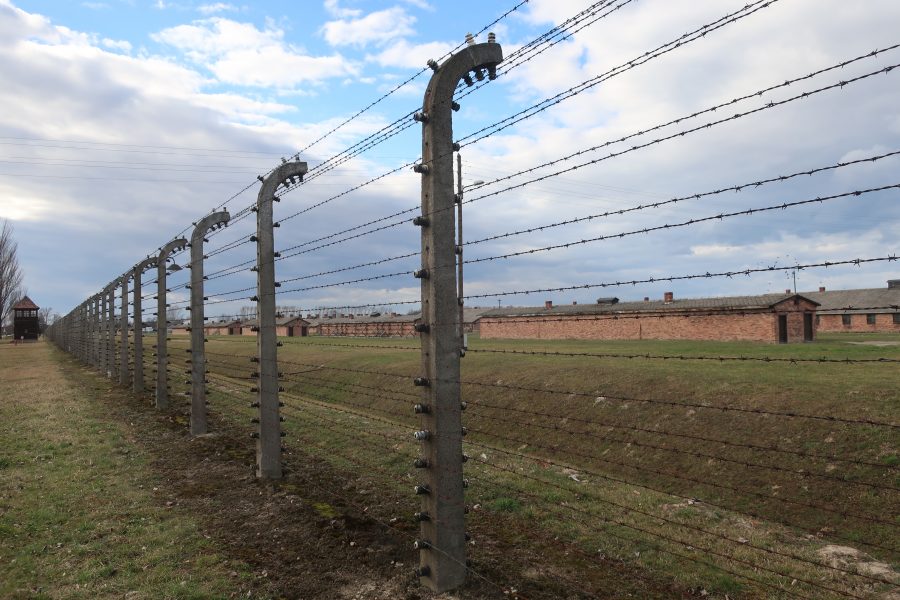
Electric fence at Auschwitz II-Birkenau. An enormous killing factory, the size of a small city.
Fountain of Tears, Birkenau – definitely worth seeing when visiting Auschwitz
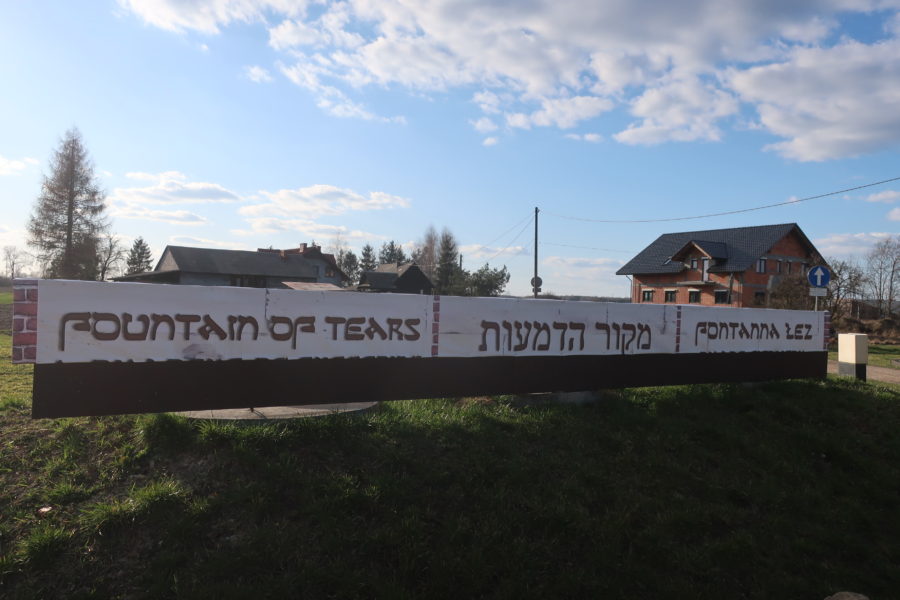
We were fortunate enough to be walking past the Fountain of Tears gallery at Birkenau when Rick Wienecke, the artist, was getting out of his car. He saw us looking (ok, me being inquisitive) and invited us in to see the art display.
His story is fascinating – copies of his book are for sale at the gallery but unfortunately there isn’t an ebook version yet.
We spent a totally unexpected hour there, and learnt so much about life in Poland in the years after the Holocaust. I hadnt realised that some of the factories which had used slave labour from Auschwitz were still operating today! Call me naive but I’d thought they’d all have been razed to the ground.
This place was fascinating, and we learnt so much about the Holocaust and the pain the survivors carry after hearing about Rick’s conversations with survivors in Israel. Dorothea, the guide on that day, was also incredibly informative.
I would definitely recommend stopping there if you go to Auschwitz-Birkenau. It was an incredibly moving and emotional place, but Rick’s energy and joy of life transformed it into something to learn from and change the way we see the world. We all need to learn compassion for others – we’re in this together!
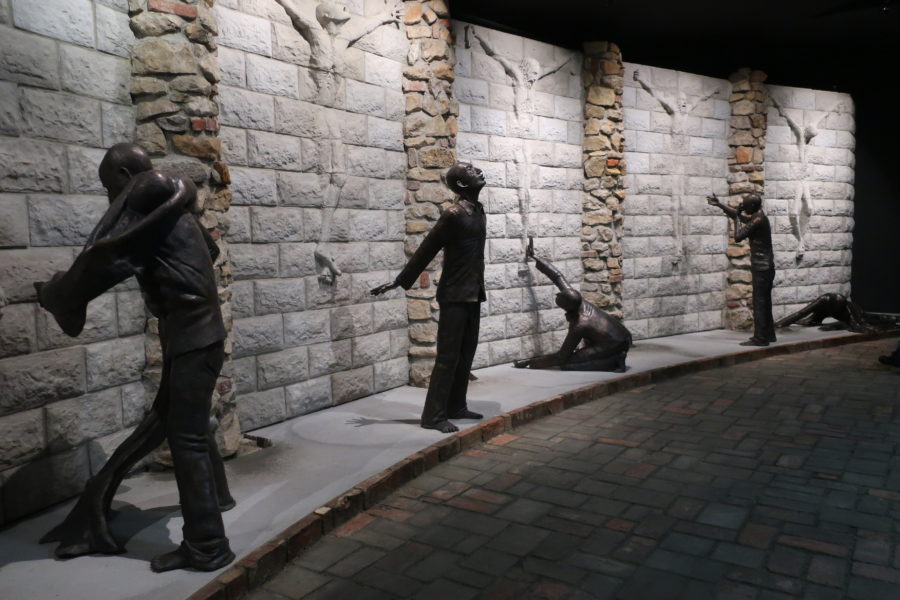


IMPORTANT INFORMATION for visiting Auschwitz Birkenau if the Memorial is closed:
- Public transport was available from the Krakow bus station – CHECK TO SEE WHEN THESE SERVICES WILL RESUME POST-COVID19
- It is possible to get a feel for the tragedy that occurred at these sites, even if you can’t go into the grounds or buildings
- WE MUST REMEMBER SO THAT THIS NEVER HAPPENS AGAIN
I hope this finds you all safe and well!
READ MORE ABOUT THE FRUGAL TRAVELLERS
